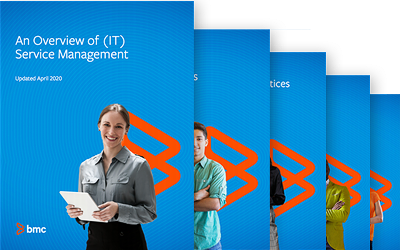What is service transition?
ITIL service transition helps plan and manage the change of state of a service in its lifecycle.

Managing risk for new, changed and retired services protects the product environment. This helps the business deliver value to itself and its customers.
Curating service knowledge helps all stakeholders make informed, reliable decisions and support challenges with service delivery. Both managing service risk and curating service knowledge are integral to service transition.
During service transition, the following organizational elements need support:
- Service strategy
- People
- Process
- Technology
- Suppliers of the service
- Organizational culture
- Governance
- Risk
No change is without risk. In fact, change can create extra risk. When transitioning services, focus on communication planning for awareness and compliance. One of the biggest challenges in service transition is changing people’s behavior to accommodate a new or different service. People have a psychological need to feel safe and comfortable with changes to them and around them.
Download Now: ITIL 4 Best Practice e-Books
These all-new for 2020 ITIL e-books highlight important elements of ITIL 4 best practices. Quickly understand key changes and actionable concepts, written by ITIL 4 contributors.
Video: ITIL Service Transition Capabilities
This video addresses capabilities needed to enhance the customer’s service experience, organizational specializations and service validations needed for service excellence. BSM, Knowledge management systems, project management, application development relationships with service management and capabilities for service performance are discussed. (11:06)
Change evaluation
ITIL change evaluation analyzes changes before they move to the next phase in their lifecycle. The lifecycle of a change includes several points at which a go/no-go decision needs to be made:
- Authorization to build and test
- Authorization to check software into the definitive media library (DML)
- Authorization to deploy
We should evaluate all changes. But, for significant changes a formal evaluation process should be invoked. Each organization must define for itself what “significant change” is.
The evaluation should include:
- Evaluating the intended effects of the change
- As far as possible, anticipating any unintended effects of the change
- Identifying risks
- Presenting a recommendation to change management on whether to proceed to the next stage
The change management process can make the go/no-go decision on proceeding to the next stage.
Release and deployment management
TIL Release and Deployment Management Processes & Best Practices ›
Service validation and testing
Testing can take place at any point in the service lifecycle but, it generally occurs during Service Transition. The service validation and testing process plans, conducts and reports on tests of new or changed services. The results of testing go to the change evaluation process to support a decision on whether to proceed.
The service design package (SDP) outlines the tests to perform.
Working with change evaluation, service validation and testing will:
- Work with transition planning and support to plan the resources required for testing
- Plan and design tests
- Schedule tests
- Prepare the test environment
- Perform the tests
- Evaluate exit criteria and report
- Clean up and close tests
Service validation and test will perform different types of tests, as called for in the service design package. Types of tests include:
- Utility testing. Does the service deliver the required functionality?
- Warranty testing. Will the service deliver required levels of availability, capacity, security, and continuity?
- Usability testing. Will the service be usable by all potential users, including those with restricted abilities?
- Contract and regulation testing. Will the service conform to applicable regulatory and contract requirements?
- Operational readiness testing. Are the support functions, including the service desk, staffed and trained to support the new or changed service?
Service asset and configuration management
ITIL Service Asset and Configuration Management Processes & Best Practices ›
Service transition planning and support
At any time, there will be several projects passing through the service transition phase of the lifecycle. It is the responsibility of transition planning and support to coordinate service transition activities for all these projects.
Specifically, the responsibilities of transition planning and support include:
- Work with capacity management to ensure that adequate resources are available
- Where there is contention for resources, develop a schedule that meets the requirements of the stakeholders
- Ensure that all parties use a standard, reusable process framework.
- Monitor and improve the performance of the Service Transition lifecycle phase.
Video: ITIL Service Transition Management
This video focuses on risk and knowledge management benefits within the service lifecycle for service outcomes. Cloud computing, BSM, SKMS, DIKW, management of organizational environment, governance and business impact management to meet business service delivery objectives are discussed. (14:48)








